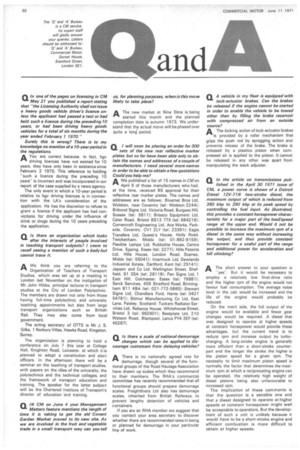Q In the article on transmissions pub
Page 52

If you've noticed an error in this article please click here to report it so we can fix it.
lished in the April 30 1971 issue of CM, a power curve is shown of a Detroit Diesel 12V-71N two-stroke diesel, the maximum output of which is reduced from 350 bhp to 290 bhp at its peak speed by controlling the fuel input. As illustrated, this provides a constant horsepower characteristic for a major part of the load/speed range at the upper end. Would it not be possible to increase the maximum rpm of a diesel in the same way without increasing the output, and thus provide constant horsepower for a useful part of the range and additional power for acceleration and hill climbing?
AThe short answer to your question Is "yes-. But it would be necessary to employ a relatively low final-drive ratio and the higher rpm of the engine would not favour fuel consumption. The average noise level in the cab would be increased and the life of the engine would probably be reduced.
On the merit side, the full output of the engine would be available and fewer gear changes would be required. A diesel that was designed to operate at higher speeds at constant horsepower would provide these advantages, but the current trend is to reduce rpm and increase output by turbocharging. A long-stroke engine is generally more efficient than a short-stroke counterpart and the longer the stroke the higher is the piston speed for a given rpm. The necessity to limit maximum piston speed is normally the factor that determines the maximum rpm at which a reciprocating engine can be operated, the relatively high weight of diesel pistons being also unfavourable to increased rpm.
The implication of these comments is that the question is a sensible one and that a diesel designed to operate at higher speeds at constant horsepower might well be acceptable to operators. But the development of such a unit is unlikely because it would have to be a short-stroke engine and efficient combustion is more difficult to obtain at higher speeds.


































































































































































